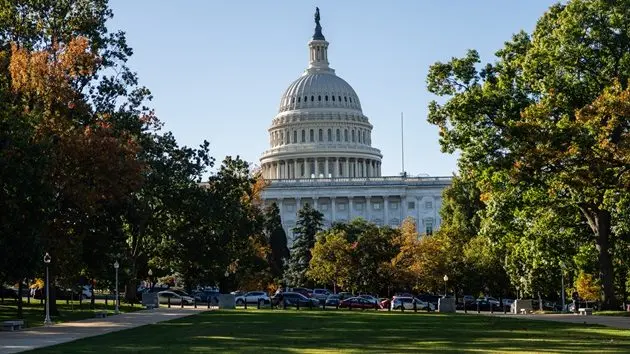
(WASHINGTON) — The Department of Homeland Security is assigning hundreds of asylum officers to the border to sort through the region’s recent surge in humanitarian needs, Secretary Alejandro Mayorkas said Wednesday.
“Short-term solutions” are needed to address the “decades-old problem” of a “broken immigration system,” Mayorkas said in explaining the surge.
“We are clear-eyed about the challenges we are likely to face in the days and weeks ahead. … We are taking this approach within the constraints of a broken immigration system that Congress has not fixed for more than two decades and without the resources we need: personnel, facilities, transportation and others that we have requested of Congress and that we were not given,” he said.
The rising number of migrants crossing the border “places an incredible strain on our personnel, our facilities and our communities with whom we partner closely,” he added.
Asked about reports that Customs and Border Protection is releasing migrants due to capacity issues, Mayorkas said those migrants are still required to meet strict conditions and report back to authorities, adding those releases only occur in limited circumstances.
“Like other administrations, when we release individuals, we release them on conditions — and their compliance with those conditions is absolutely necessary. And if they fail to comply, we will seek to apprehend them and remove them,” he said.
The department is facing one of its greatest tests in the coming days when severe border restrictions — first ordered by the Trump administration — will finally come to an end. With the potential for an unprecedented humanitarian disaster, Border Patrol agents are bracing for the worst.
Standing on the banks of the Rio Grande River, Border Patrol Chief Raul Ortiz told ABC News his agents are prepared but need more help.
“I certainly need more Border Patrol agents out here on the front lines,” Ortiz added. “I need to be able to build an enterprise behind them to process the migrants that we encounter each and every day.”
Ortiz has studied the landscape of the southwest border for decades, marshaling resources across the nearly 2,000-mile borderline. Homeland Security has ramped up its ability to quickly deport migrants while striking deals with Mexico to take on more of the burden. The question now is: Will it dam back the influx of expected migration?
With an order from the Centers for Disease Control and Prevention under the Trump administration, Title 42 of the U.S. code has allowed authorities at the border to rapidly expel migrants, citing the desire not to spread COVID-19.
Without the pandemic justification, that practice will end, removing a critical — and controversial — tool from the Border Patrol’s toolbox. The fast-track nature of the expulsions has limited opportunities for migrants to apply for asylum after being suspected of crossing into the U.S. illegally. Those concerns persist as the administration works to replicate the expedited nature of Title 42 expulsions while promising to prosecute those who repeatedly attempt crossing illegally.
“You know, we may not expel you, but we’re going to do everything we can to repatriate you because there’s got to be consequences to our immigration system,” Ortiz said, referring to the formal process of deportation that was the standard before Title 42.
But deportations take time, and under U.S. law, noncitizens have the right to request asylum — a process that can stretch out for months or years. The asylum case backlog reached an all-time high last year of more than 1.5 million, according to researchers at Syracuse University.
The number of migrants arriving in the southwest has remained persistently high despite significant drops since 2022. Last month, Border Patrol made 163,695 apprehensions nationwide, down from a historic peak of 225,100 in May 2022.
But border communities, and the agents protecting them, remain under strain. On a recent trip to the Rio Grande Valley, where the massive river serves as the U.S.-Mexico dividing line, ABC News watched as the U.S. Border Patrol surveilled the region and made arrests. A team from ABC News watched as a mother and her two young daughters were taken into custody after crossing on a raft. Later that morning, a group of three men were taken into custody after being found asleep in dense brush.
Fearing for their safety and privacy, those arrested declined to provide details of their reasons for crossing. But the men expressed relief at the prospect of getting some temporary shelter and water from Border Patrol.
Those from Mexico will have the opportunity to return voluntarily if they cannot meet the standard for lodging asylum claims.
But migrants from other countries — especially those with strained U.S. diplomatic relationships, like Colombia and Venezuela — pose a greater challenge for repatriation. International flights require logistical coordination and tight security measures.
Those challenges prompted the U.S. to strike a deal with Mexico to begin accepting up to 30,000 Haitians, Cubans, Nicaraguans and Venezuelans who don’t qualify for asylum each month. At the same time, the U.S. has rolled out a parole system to allow the same number of migrants from those countries the opportunity to seek asylum or other forms of humanitarian protections.
And now, even tighter asylum restrictions will target those who cross through multiple countries without first applying for legal authorization outside the U.S. Only migrants with “exceptionally compelling circumstances” will be able to challenge the higher bar for asylum eligibility, according to DHS. These exceptions include severe medical emergencies, “extreme,” “imminent,” and “severe” threats of rape, kidnapping torture or human trafficking.
Advocacy groups and thousands of immigrant rights supporters have opposed the restrictions. Pro-immigrant groups have called these requirements an effective ban on asylum given the difficulties many migrants face in navigating legal pathways from outside the U.S. The American Civil Liberties Union called the new rules “unfair, unwise, and illegal” and urged the Biden administration to reverse course after the proposal was announced earlier this year.
“The end of Title 42 should have been a time for the United States to reset and return to the humane asylum system promised by this administration. But instead this administration is recycling yet another anti-asylum Trump ban. We will sue as we did under the Trump administration,” Lee Gelernt, lead counsel on challenges to Title 42 and the Trump administration’s asylum bans, said.
Lawsuits challenging the restrictive policies are expected.
Copyright © 2023, ABC Audio. All rights reserved.






